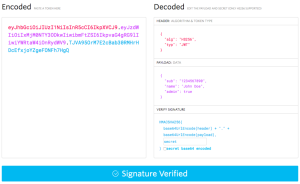How Did You Get Started? A Look at the Best & Worst Web Design Tools

This is the editorial from my latest newsletter, subscribe here.
Recently, I got a blast from the past when I read that Adobe’s Dreamweaver is making a comeback. I was a regular Dreamweaver user in my time, but since moving on (when I made the switch to Linux) I had more or less forgotten about its existence. This made me curious as to which other web authoring tools I have used throughout my career, so I decided to take a look.
A quick rummage in my bookshelf produced this gem — Frontpage 2000 Made Simple. Frontpage (now discontinued) was an editor by Microsoft and the tool I used to create my first ever web page. Its WYSIWYG approach made it appealing to novices (and in those days, most people were novices), as did its tight integration with Microsoft’s range of Office products. Unfortunately, it produced very messy and invalid code, with pages tending to be optimized for Internet Explorer. As soon as I realized that I was serious about web development, I knew it was time to move on.
When I landed my first job working with the web, I was given a copy of Dreamweaver. This was definitely a step up from Frontpage and was packed full of features I loved, such as a site-wide search and replace, code suggestion and a file manager. For a while, I was a happy and productive Dreamweaver user, until it dawned on me that it came with a tarnished reputation. The main gripe people had was that (like Frontpage) Dreamweaver packed a WYSIWYG editor which facilitated the production of invalid markup and bloated code. Although I was only using the WYSIWYG to enter the occasional bit of content, this still made me realize that code maintainability was a thing and more importantly, a thing I should care about.
I bid farewell to Dreamweaver when I made the switch from Windows to Linux. Saying goodbye was hard and I even went as far as to get Dreamweaver working with Wine (but luckily, soon realized the folly of this approach). While getting to grips with my new OS, I spent a while exploring some of the common Dreamweaver alternatives (namely Bluefish, KompoZer and NVU). These were all great tools in their own right, but sadly none of them quite hit the mark and I found it difficult to use them in a productive manner.
Eventually, I decided to invest the time to get to grips with a text editor. By this point I had started programming for the web (mostly Ruby in those days) and had been using something called SciTE on Windows (which was OK, but seemed a little rudimentary). After some deliberation I settled on Sublime Text as my editor of choice and I haven’t looked back since (I must admit that I did try and get to grips with Vim for a while, but I found it too esoteric and gave up). Anyway, Sublime Text is completely customizable and has plugins for just about anything you could imagine (here’s a good list for JavaScript developers). It comes packed full of features, such as multi-edit (which lets you simultaneously edit all of the occurrences of a string in a file) or goto anything (a great way of hopping between methods in large files). This all seemed like black magic at first, but once mastered is something you’ll wonder that you were able to live without.
So there you have it: I started on FrontPage, grew up on Dreamweaver and ended up with Sublime Text. But what about you? What kind of tools have you used to produce web pages throughout the years? What’s been your favorite and what sucked most? And what about IDEs — do they have a place in the world of JavaScript development? Let me know in the comments below.
Frequently Asked Questions about Web Design Tools
What are some common mistakes in web design that I should avoid?
There are several common mistakes in web design that can negatively impact user experience and overall website performance. These include cluttered layouts, poor navigation, lack of mobile optimization, slow loading times, and excessive use of pop-ups. It’s also crucial to avoid outdated design elements and ensure your website is accessible to all users, including those with disabilities.
How can I identify a good web design tool?
A good web design tool should be user-friendly, versatile, and offer a wide range of features to cater to different design needs. It should also have a supportive community for troubleshooting and learning, regular updates for improvement, and compatibility with other tools or platforms you may be using.
What are the benefits of using professional web design tools?
Professional web design tools offer numerous benefits. They can help streamline your design process, improve the quality of your designs, and increase your productivity. They also often come with advanced features that allow for more customization and flexibility in your designs.
Are there any free web design tools that are worth using?
Yes, there are several free web design tools that offer great value. These include tools like Canva for graphic design, Google Web Designer for HTML5 content, and WordPress for website building. However, keep in mind that free tools may have limitations compared to their paid counterparts.
How can I improve the usability of my website?
Improving website usability involves making your site easy to navigate, ensuring it loads quickly, and making it mobile-friendly. It’s also important to use clear, concise language, provide helpful information, and make sure your site is accessible to all users.
What are some examples of bad web design?
Bad web design can take many forms, but some common examples include cluttered layouts, poor color choices, hard-to-read fonts, lack of mobile optimization, and slow loading times.
How can I keep up with web design trends?
Keeping up with web design trends involves regularly reading industry blogs, following influential designers on social media, attending web design conferences, and experimenting with new tools and techniques.
What are the key elements of good web design?
Good web design involves a clean and intuitive layout, easy navigation, mobile optimization, fast loading times, and accessible design for all users. It’s also important to use high-quality images and typography, and to ensure your content is relevant and engaging.
How can I learn more about web design?
There are many resources available for learning about web design, including online courses, tutorials, blogs, and books. You can also learn by experimenting with different tools and techniques, and by seeking feedback from other designers.
What are some common misconceptions about web design?
Some common misconceptions about web design include the idea that design is all about aesthetics, that it’s easy to do, and that it’s not important for business success. In reality, good web design is a balance of aesthetics and functionality, requires a range of skills, and can significantly impact a business’s online presence and performance.
Network admin & freelance web developer.


